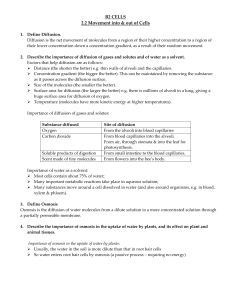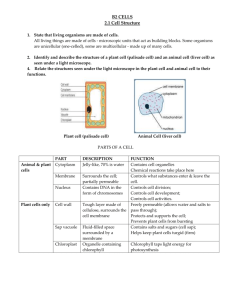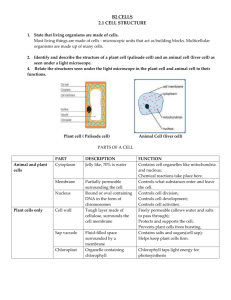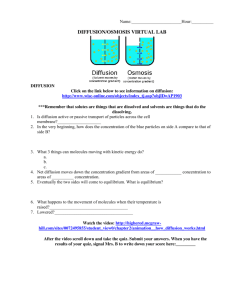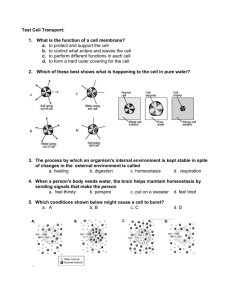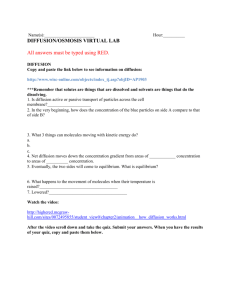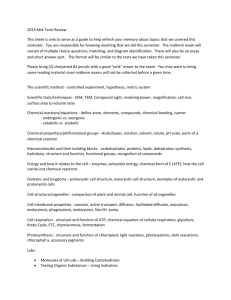B2.2 Revision notes
advertisement
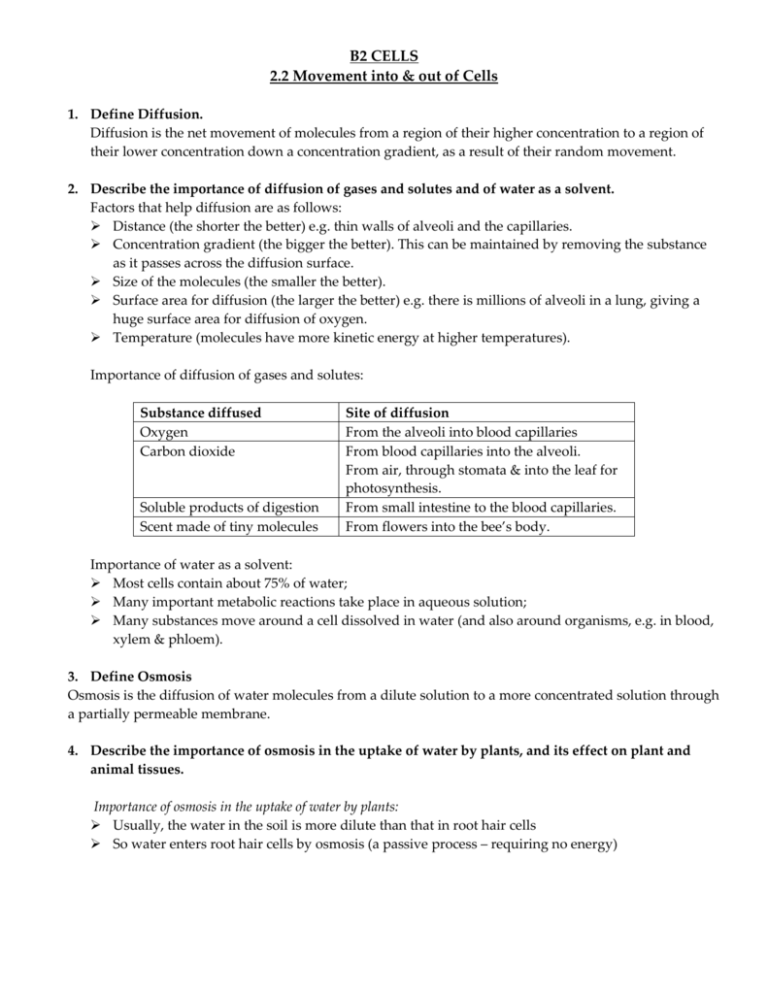
B2 CELLS 2.2 Movement into & out of Cells 1. Define Diffusion. Diffusion is the net movement of molecules from a region of their higher concentration to a region of their lower concentration down a concentration gradient, as a result of their random movement. 2. Describe the importance of diffusion of gases and solutes and of water as a solvent. Factors that help diffusion are as follows: Distance (the shorter the better) e.g. thin walls of alveoli and the capillaries. Concentration gradient (the bigger the better). This can be maintained by removing the substance as it passes across the diffusion surface. Size of the molecules (the smaller the better). Surface area for diffusion (the larger the better) e.g. there is millions of alveoli in a lung, giving a huge surface area for diffusion of oxygen. Temperature (molecules have more kinetic energy at higher temperatures). Importance of diffusion of gases and solutes: Substance diffused Oxygen Carbon dioxide Soluble products of digestion Scent made of tiny molecules Site of diffusion From the alveoli into blood capillaries From blood capillaries into the alveoli. From air, through stomata & into the leaf for photosynthesis. From small intestine to the blood capillaries. From flowers into the bee’s body. Importance of water as a solvent: Most cells contain about 75% of water; Many important metabolic reactions take place in aqueous solution; Many substances move around a cell dissolved in water (and also around organisms, e.g. in blood, xylem & phloem). 3. Define Osmosis Osmosis is the diffusion of water molecules from a dilute solution to a more concentrated solution through a partially permeable membrane. 4. Describe the importance of osmosis in the uptake of water by plants, and its effect on plant and animal tissues. Importance of osmosis in the uptake of water by plants: Usually, the water in the soil is more dilute than that in root hair cells So water enters root hair cells by osmosis (a passive process – requiring no energy) Effects of osmosis on plant and animal tissues: When placed in pure water, plant and animal cells will take in the water by osmosis; This is because there is a higher concentration of water molecules outside the cell than inside it; Plants become turgid, but do not burst because of their tough cell wall; Animal cells will burst, because they have no cell wall; The reverse happens when plant and animal cells are placed in a concentrated sugar or salt solutions. This is because there is a higher concentration of water molecules inside the cell than outside it; Plant cells become flaccid and the cytoplasm is no longer pressed against the cell wall; Turgid plant cell Flaccid plant cell Animal cells also become flaccid and their shape changes- they can become crenated. RBC burst Crenated RBC 5. Describe and explain the importance of a water potential gradient in the uptake of water by plants. Water potential is the correct term for saying ”water concentration” a high water potential is equivalent to a low solute concentration and vice versa; For plants to take in water through their roots they must have a high solute concentration or low water potential in the roots and low solute concentration or high water potential outside the roots. In osmosis, water molecules diffuse down a water potential gradient.
